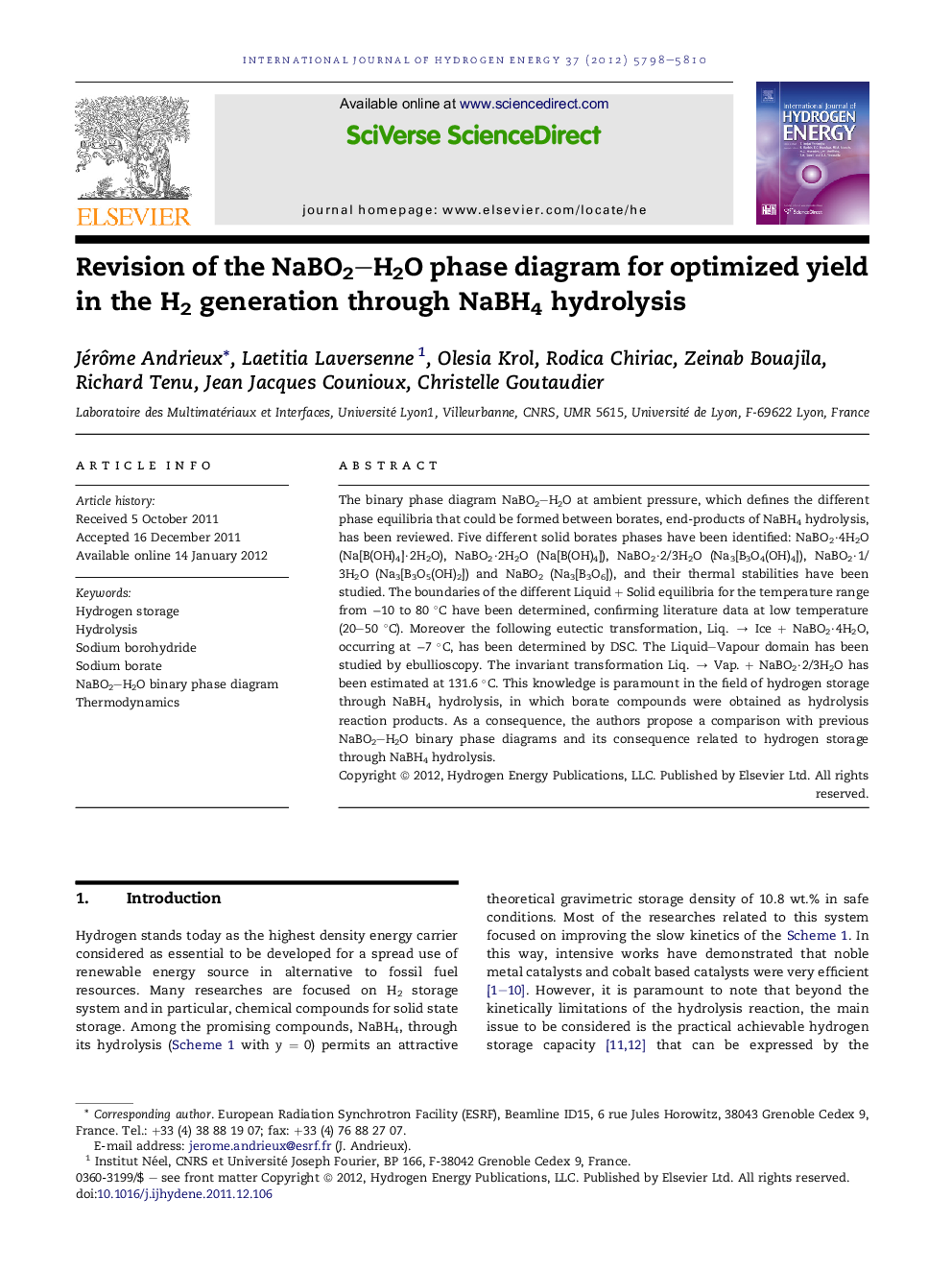| Article ID | Journal | Published Year | Pages | File Type |
|---|---|---|---|---|
| 1276871 | International Journal of Hydrogen Energy | 2012 | 13 Pages |
The binary phase diagram NaBO2–H2O at ambient pressure, which defines the different phase equilibria that could be formed between borates, end-products of NaBH4 hydrolysis, has been reviewed. Five different solid borates phases have been identified: NaBO2·4H2O (Na[B(OH)4]·2H2O), NaBO2·2H2O (Na[B(OH)4]), NaBO2·2/3H2O (Na3[B3O4(OH)4]), NaBO2·1/3H2O (Na3[B3O5(OH)2]) and NaBO2 (Na3[B3O6]), and their thermal stabilities have been studied. The boundaries of the different Liquid + Solid equilibria for the temperature range from −10 to 80 °C have been determined, confirming literature data at low temperature (20–50 °C). Moreover the following eutectic transformation, Liq. → Ice + NaBO2·4H2O, occurring at −7 °C, has been determined by DSC. The Liquid–Vapour domain has been studied by ebullioscopy. The invariant transformation Liq. → Vap. + NaBO2·2/3H2O has been estimated at 131.6 °C. This knowledge is paramount in the field of hydrogen storage through NaBH4 hydrolysis, in which borate compounds were obtained as hydrolysis reaction products. As a consequence, the authors propose a comparison with previous NaBO2–H2O binary phase diagrams and its consequence related to hydrogen storage through NaBH4 hydrolysis.
► Hydration degree of borate formed after NaBH4 hydrolysis defines the GHSC. ► A revision of the NaBO2–H2O binary phase diagram under atm. pressure is proposed. ► NaBO2·yH2O with y = 4, 2, 2/3, 1/3 and 0 were observed as stable compounds. ► Three Liquid + Solid domains define the best conditions to reach highest GSHC. ► 9.3 wt%H2 could be obtained if NaBO2·2/3H2O is formed after NaBH4 hydrolysis.
